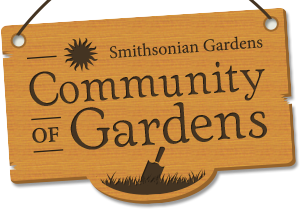Fannie Griscom Parsons' Children's Garden
Description
In the summer of 1902, the land that would become New York City’s DeWitt Clinton Park, just a few blocks from Central Park, was described as a place so run-down that even “The most vivid imagination could not have conceived a more desolate spot than this…Approached form the east, through filthy streets…it loomed up a dark blot upon the beautiful background of cool river, green hills, and blue sky. Rows of tumble-down houses, disused carts, piles of rubbish, stones, rages, and litter, among which the children played, made even the streets seem neat and orderly in comparison.”Witnessing the unsanitary conditions of New York’s urban environment first-hand, Fannie Griscom Parsons (1850-1923), an early pioneer of children’s gardening, imagined an alternative. On the “unimproved site on Fifty-third Street between Eleventh and Twelfth Avenues…overlooking the river, and used for many years as a dumping-ground and storage place for trucks,” she envisioned a place where children, many of them second-generation Americans, could become “proper” urban citizens through the process of gardening, environmental beautification, and contact with the natural world.
Over the next year, Parsons, with help from the city’s parks department, transformed this small piece of land into rows of orderly garden plots, intended to teach responsibility, concentration, and “private care of public property." By 1903, Parsons noted with some satisfaction that “in a neighborhood where before only vandalism reigned this miniature farm, lying in one of New York’s most congested districts, awakened an almost forgotten feeling in the hearts of the people of the neighborhood, at the same time satisfying the active restlessness of the children.” For Parsons, her garden, an early example of an urban community garden, was a place where the transformation of land and people worked together.
Although DeWitt Clinton Park remains a part of New York City’s landscape, photographs are all that remain of this of the children’s garden plots, which the city removed in 1932 to make room for the West Side Highway.
Photos Show
Children at DeWitt Clinton Park circa 1906
Children at DeWitt Clinton Park with factory in background, circa 1906. Annual Report, New York City Department of Parks, 1906. [View Additional File Details]
Children at DeWitt Clinton Park vegetable plot, 1902
Children posing for the camera at DeWitt Clinton Park in a vegetable plot, 1902. Annual Report, New York City Department of Parks, 1902. [View Additional File Details]
Garden plots at DeWitt Clinton Park, circa 1909
Garden plots at DeWitt Clinton Park, circa 1909. Smithsonian Institution, Archives of American Gardens, Thomas Warren Sears Collection, [View Additional File Details]




